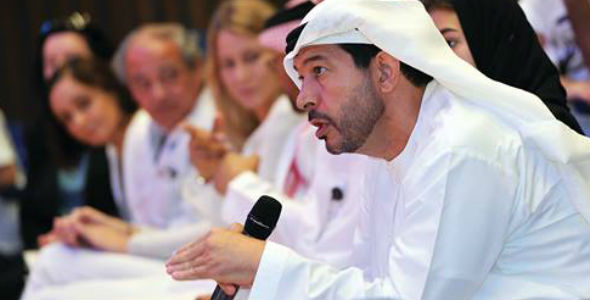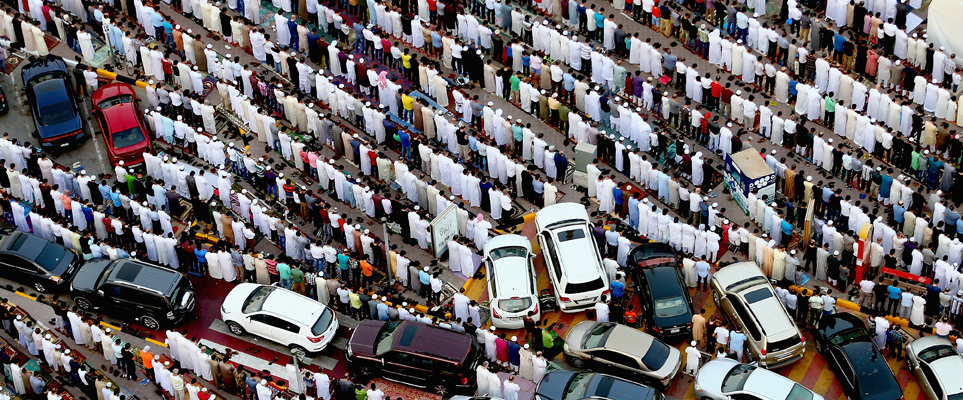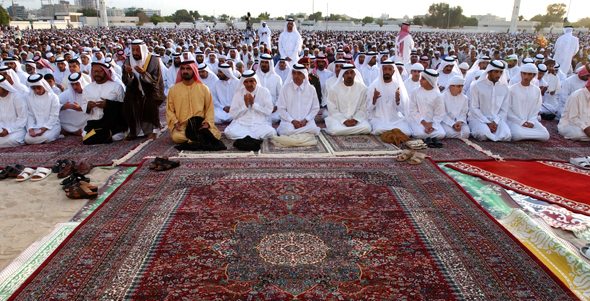What is the Hajj? The story behind Eid Al Adha
Nasif Kayed from the Arab Culturalist talks us through the ritual of the Hajj and how it originated…
Emirati educator Nasif Kayed has been teaching people from around the world about the cultural norms of the Gulf region for 25 years, and today he explains what the long weekend’s public holiday means to him and the many millions of Muslims around the world…
Hajj is the Arabic word for pilgrimage and is a journey to the city of Mecca in Saudi Arabia that a submitter (Muslim) must make once in a lifetime if able financially and physically. This fulfills what is ordained by the Lord Allah as one of the five Pillars/Acts of Worship.

Nasif Kayed of the Arab Culturalist talks us through the religious meaning behind the public holiday.
THE HAJJ JOURNEY
Today Muslims plan to make this journey when they are able as one of the five Acts of Worship. The pilgrim must strip him or herself from all worldly attachments, this is symbolised by the wearing of two simple pieces of white cloth for the male, and a white or plain dress for a female that is free of any designs or frills. This in itself brings about the principle of equality between all pilgrims regardless, of wealth, colour, ethnicity, language and health.
In the holy city of Mecca lies the Ka’ba, a square building draped in adorned black cloth which was built by the Prophet Ibrahim PBUH and his son Ismael. This house of worship has been preserved, and the area built up around it is known as Al Haram Al Shareef. This is where more than 3 million pilgrims perform Hajj each year, circling around it sets of 7 times and performing daily prayers. They are many steps to the journey and worshippers must stay focused and patient.
Regardless of where you from, as a Muslim, once you have reached adulthood you should strive to fulfill this obligatory act of worship once in your lifetime. To some it is easily accomplished, to others it is very hard because of distance, the money it costs to make the journey or the physical strength necessary to perform the rituals of Hajj.
Some Muslims never get a chance to go before they pass away. In this case, someone else can perform Hajj on their behalf, but not before they have completed their own.

Eid prayers in Dubai.
Following the completion of this journey, all Muslims celebrate Eid Al Adha, which starts with a congregational prayer shortly after sunrise, and then involves dressing in new clothing and visiting family and friends. Children receive gifts and families spend time together.
THE STORY BEHIND THE HAJJ
The principle behind this journey is to commemorate the story of Prophet Ibrahim (PBUH) who is known as the father of the three monotheistic religions, Judaism, Christianity and Islam. He reestablished the belief in One God, Allah, in an era when idol worshipping had become a way of life. According to Islam, he grew up in a home where his father was an idol maker, making idols from wood, stones and dates and sold them. Ibrahim felt in his heart that this was wrong, and would spend days journeying and contemplating the nature of the true Lord. Ibrahim was chosen by the Lord Allah to deliver this message, and he endured numerous tests and trials of faith…

H.H. Sheikh Mohammed bin Rashid Al Maktoum, Vice President of the UAE and Ruler of Dubai, performing Eid prayers.
THE FIRST LESSON
Ibrahim had a desire for a son, but became an old man without children. He remained patient and faithful and continued to ask for a son until Ismael was born from his wife Hajar in old age. Later he was blessed with Isaac from his wife Sarah, Peace be upon them all. (The moral behind this story is patience.)
THE SECOND LESSON
Allah asked Ibrahim to take baby Ismael and his wife Hajar to the desert, and leave them alone in the area that is known today as Mecca. Hajar trusted in Allah‘s order and waited patiently. Once out of food and water and alone with her baby, Hajar ran between the hills called Safa and Marwa, looking for help. She prayed for Allah’s Mercy and protection, and the Almighty provided for them a spring called Zam Zam which opened from under the feet of Ismael. This story is reenacted by the Pilgrims at Hajj who run in between Safa and Marwa 7 times, and drink from Zam Zam.
It is this spring that made life possible in such a harsh place that grew into the great city of Mecca and became the home of the holiest mosque in Islam.
(The moral behind this story is to trust in Allah.)
THE THIRD LESSON
Once again Ibrahim is tested by the Lord as he is told in a dream to sacrifice his son. When Ibrahim tells Ismael of the dream he obediently answers, “Do as you are ordered!”. When both son and father are ready to obey their Lord without questions or hesitation, Allah bestows His mercy on them and presents Ibrahim with a ram to sacrifice instead of his son. (The moral here is absolute obedience.)
WHAT EID AL ADHA MEANS TO MODERN MUSLIMS
The last tale is commemorated by sacrificing a lamb on Eid Al Adha at the completion of Hajj. The meat is shared among family, neighbors and the poor, and we remember how blessed we are. It also reminds us to relinquish our love for material possessions, think of those who are in need and appreciate the most important and dear to us, our Lord, our families, our neighbors and community.
Hajj is a commemoration of the devotion to worshipping the one and only God, to be willing to sacrifice what you most adore and has been prescribed on the people since the time of Ibrahim.
Words: Nasif Kayed
For more on Muslim and Arab culture and customs, visit The Arab Culturalist.
– For more about Dubai straight to your newsfeed, follow us on Facebook.
– Images: Getty & supplied
